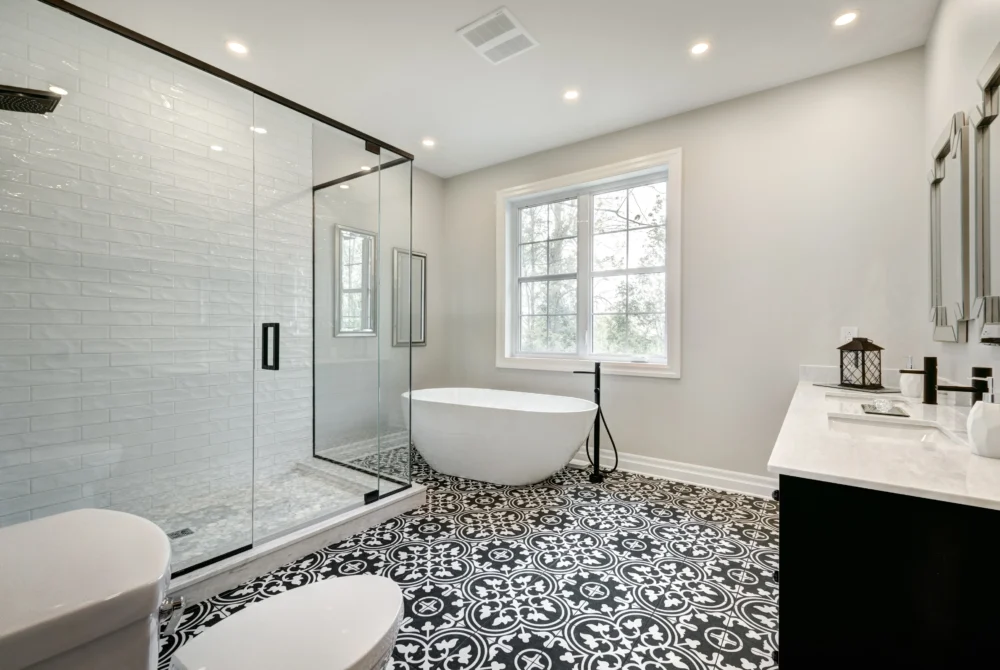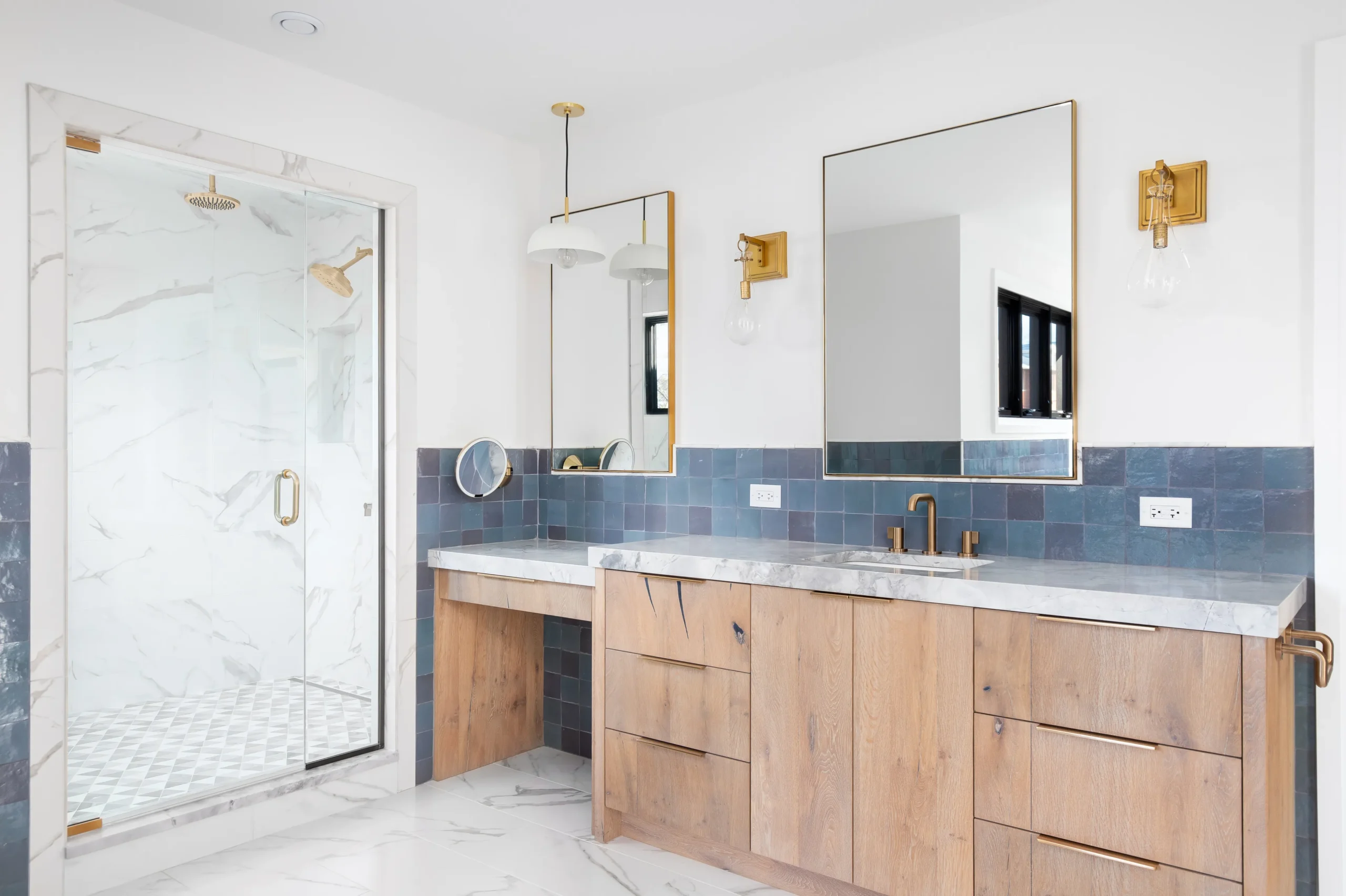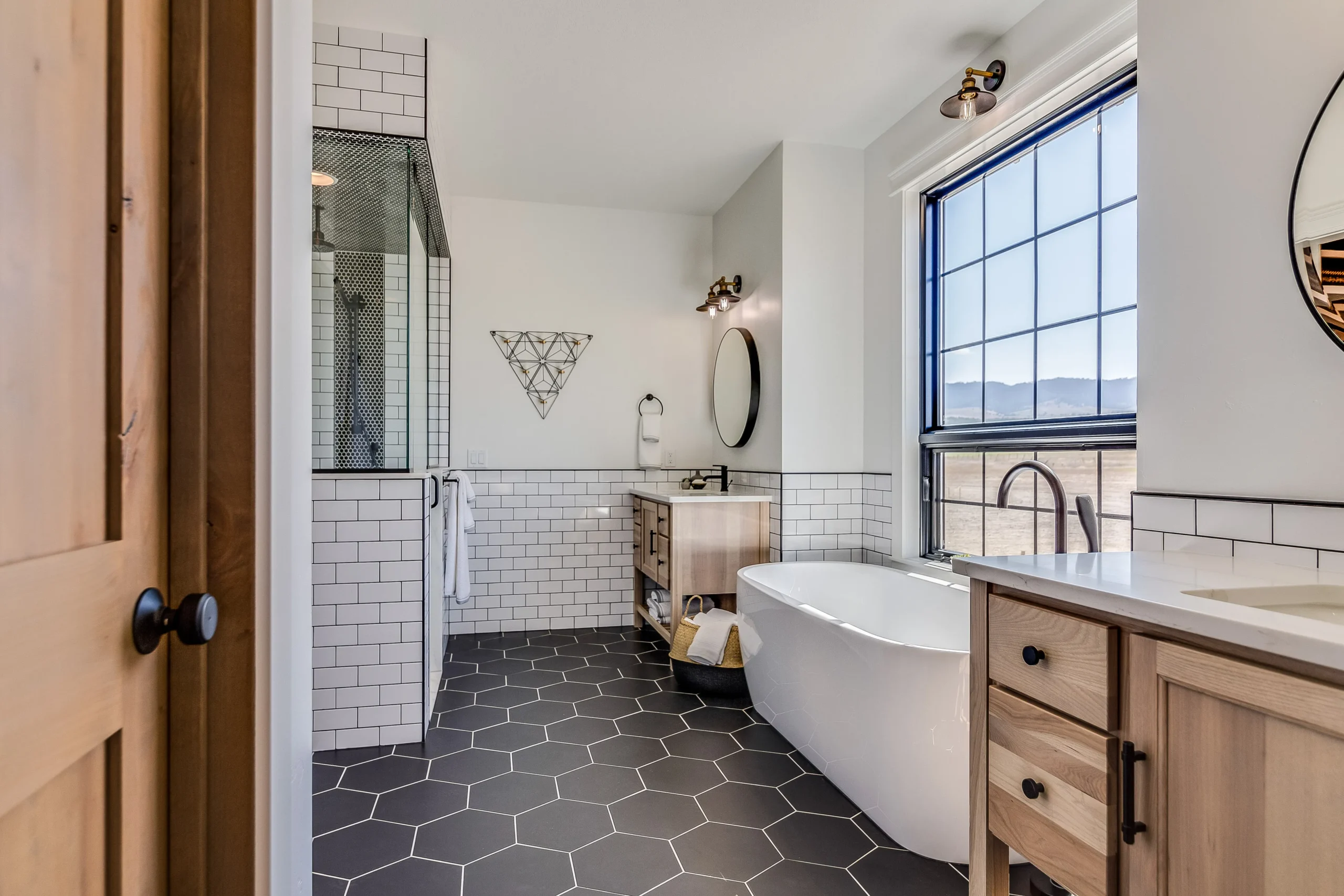Bathroom remodeling cost in 2025 depending can be anywhere between $3,000 and $50,000 depending on the materials, size, and scope of your renovation.
If you’re just looking to breathe a little new life into the space, you can usually get away with spending between $3,000 and $5,000 to refresh the fixtures and install a new vanity.
Planning to expand the bathroom and install luxury features and finishes? You’d best limber up that checkbook.
Not sure what you’re looking at in terms of cost for your bathroom remodel in 2025? Our guide will lay out what you need to know, including cost-related factors.
The Factors That Affect Bathroom Remodel Costs
Embarking on a bathroom remodel in 2025 is not all that different from cooking a well-balanced meal: it requires thoughtful planning, quality ingredients, and an understanding of the essential components that bring it all together.
Just as in the kitchen, where the choice of fresh, local produce can elevate a dish, the materials and fixtures you select for your bathroom will define both its functionality and aesthetic appeal.
Understanding the Costs
In 2025, homeowners are spending between $3,000 – $5,000 for modest updates and upwards of $50,000 for luxurious overhauls. What you pay depends on the scope of your project, the materials chosen, and the professionals enlisted to bring your vision to life.
Going the DIY route? You could get off a lot cheaper even with luxury materials. However, it could also mean major mistakes that cost you time, materials, money, and sanity. Hiring a professional (or a whole crew) will absolutely cost more, but it could mean getting done faster, fewer mistakes, and a significantly better fit-and-finish at the end.
Of course, there’s a lot more to consider here beyond whether you hire help or not. Just like creating a delicious meal, you’ll need to get all the ingredients first. Let’s break down what you’ll need.
5 Ways to Save Money on Your 2025 Bathroom Remodel
The Ingredients: Key Cost Factors
A lot goes into even a modest bathroom remodel. Understanding the different factors at play will help you budget accurately, but it will also give you a better idea of the timeline and just how much the project is going to affect your family’s daily schedule.
- Labor: Much like hiring a skilled chef, quality craftsmanship comes at a price. Labor can consume about 40% to 60% of your budget. For a $20,000 remodel, expect to allocate between $8,000 and $12,000 for skilled tradespeople. If you do it yourself, you can cut most of those costs, but don’t assume that your own labor is free (you’re doing this rather than something else, plus you’ll need to account for mistakes, etc.).
- Materials: The materials are your raw ingredients. Opting for artisanal tiles or custom cabinetry can quickly skyrocket your bathroom remodel costs. Materials should comprise roughly 30% to 50% of your budget. In a $20,000 project, this translates to $6,000 to $10,000.
- Fixtures and Features:
- Vanity: Your vanity is one of the main focal points of the bathroom and it’s priced as such. A standard vanity might cost $300, while a bespoke piece can reach $3,800.
- Cabinets: You need something to support your sink and to provide storage for essentials in the bathroom. Stock cabinets start at $200, with custom designs exceeding $3,000.
- Tiles: Tile is eye-catching, waterproof (when installed correctly), and incredibly durable. Basic ceramic tiles are priced at $1.50 per square foot, whereas high-end stone tiles can be $15 or more. You also need to factor in grout, time, and expertise to install the tile, particularly if you’re going with a pattern, and more.
- Bathtubs: Don’t neglect your bathing space. A simple alcove tub may cost you $200, but a freestanding whirlpool tub can surpass $5,000. You may also need to modify your plumbing if you’re installing something like a whirlpool tub.
- Showers: Many people skip the tub in favor of a shower. Others want both in their bathroom designs. Know what you want before you get started. Basic shower models begin at $450, with luxury walk-ins exceeding $5,000. Make sure to plan for safety and the future. Will you benefit from things like grab bars and non-slip flooring?
- Toilets: Don’t forget one of the most important pieces of the bathroom remodel puzzle: the toilet. Prices range from $100 to $1,500, depending on features, style, and design.
- Lighting: You’ll need to light up that space, and your choices here can have a big influence on overall costs, as well as usability and feel. Fixtures can cost between $100 and $400, influenced by design and technology.
- Shower Enclosures: Want to enclose your shower in something more than a hanging curtain? You’ll need a custom enclosure. These vary from $600 for standard models to $2,500 for custom glass designs.
- Accessories: Don’t forget the niceties. Updating mirrors, towel bars, and hardware can add $100 to $600 to your expenses.
- Tools: If you’re going the DIY route rather than hiring a professional team, you’ll need tools. You might already have some or most of them, but if you don’t, you’ll have to buy (or rent) them. Not only does that come at an additional cost, but you’ll have to account for the time needed to get them (and return them if you’re renting).
Size and Scope
The scale of your remodel is like the number of courses in a meal. A simple refresh is something close to a light appetizer, while a full renovation resembles a meal with multiple courses. Expanding the bathroom or reconfiguring its layout introduces additional plumbing and structural work, and that can significantly increase costs.
Here’s an example: just changing the hardware in your bathroom (towel bars, mirrors, etc.) might only cost a few hundred dollars and may require a few hours of work. Expanding your bathroom to make room for a larger shower will usually require removing structural elements like walls, possibly installing new pipes, and then covering all that up with new tile, leading to multiple days of work and costing you significantly more.
Regional Flavors
Just as culinary tastes vary by region, so do remodeling costs. Factors like local labor rates and material availability can influence your budget. They will also affect your timeline and the level of frustration you have to deal with overall.
For instance, a remodel in a metropolitan area may be pricier than in a rural one. However rural remodeling projects might be complicated if you don’t have access to the right contractors or if you can’t get the materials that you really want for your renovation.
Sustainable Choices
In the spirit of mindful consumption, consider eco-friendly materials and water-saving fixtures. While they might have a higher upfront cost, they offer long-term savings and contribute to environmental stewardship.
Examples of sustainable materials include reclaimed wood, recycled glass, repurposed/reclaimed tile, and bamboo. Water-saving fixtures, like faucets, toilets, and showers, use less of this precious resource but don’t leave you trying to wash up with just a trickle.
Planning Your Bathroom Remodel
Approaching your bathroom remodel with the care and attention of preparing a delicious meal helps make sure you’re able to create a space that serves both your needs and desires in terms of aesthetics. By understanding the costs and making informed choices, you’ll create a bathroom that’s both functional and delightful.




